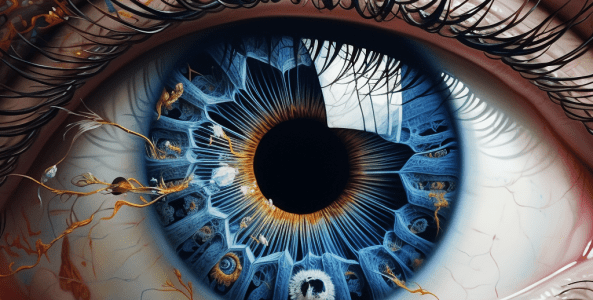Introduction
In the fast-paced marketing world, strategies are constantly evolving to capture the attention and engagement of consumers. While various techniques and tactics have been used over the years, one undeniable truth has emerged: humans are inherently visual beings. The success of current market strategies relies on this fundamental aspect of human nature. In this article, we will explore why and how contemporary marketing approaches provide compelling evidence of our visual nature.
The Evolutionary Origins of Visual Processing
To understand why current market strategies revolve around visuals, it’s crucial to delve into our evolutionary history. Humans have relied on their visual senses for survival for thousands of years. Our ancestors needed to quickly identify threats, locate food sources, and navigate complex environments. This primal reliance on sight has deeply ingrained visual processing into our brains. In the modern context, this means that our brains are wired to process visual information quickly and effectively. Studies have shown that the human brain can process images in as little as 13 milliseconds, highlighting the incredible speed at which we interpret visuals. This rapid processing of visual stimuli has significant implications for marketing strategies.
The Power of Visual Content
The adage “a picture is worth a thousand words” holds true in the marketing world. Visual content is more memorable and attention-grabbing than text alone. Consider the rise of platforms like Instagram and Pinterest, which are entirely centered around visual content. These platforms have harnessed the power of images to captivate audiences and drive engagement. Moreover, research has demonstrated that visual content outperforms text in terms of retention. When people hear information, they typically remember only 10% of it after three days. However, when that information is paired with relevant visuals, retention increases to an impressive 65%. This stark contrast emphasizes the effectiveness of visuals in conveying messages and making them stick.
The Role of Social Media
Social media has played a pivotal role in solidifying the notion that humans are visual beings. Platforms like Facebook, Twitter, and TikTok have revolutionized how companies engage with their audiences. The prevalence of images and videos on these platforms is evidence that visual content garners more attention and interaction. Furthermore, social media algorithms prioritize visual content in users’ feeds. Posts with images or videos are more likely to be seen and shared, amplifying their reach. This phenomenon has prompted businesses to adapt their marketing strategies to focus on creating visually appealing content that resonates with their target audiences.
Visual Storytelling
One of the most compelling ways in which marketing strategies demonstrate humans’ visual nature is through visual storytelling. Storytelling is a powerful tool that allows brands to connect with consumers on a deeper level. When stories are told through visuals, they become even more engaging and emotionally resonant. Brands now utilize platforms like YouTube, Instagram Stories, and Snapchat to craft narratives through images and videos. These stories provide a glimpse into the brand’s values, mission, and products in a way that text alone cannot achieve. Through visual storytelling, companies can forge meaningful connections with their audience, driving brand loyalty and customer engagement.
The Rise of Visual Search
Another fascinating development that highlights our visual nature is the rise of visual search technology. Companies like Google and Pinterest have introduced visual search tools that enable users to search the internet using images instead of text. This innovation acknowledges our natural inclination to find information visually, bypassing the need for keyword-based searches. Visual search has significant implications for e-commerce, as users can now easily find and purchase products they encounter in the physical world. This technology represents a convergence of our biological predisposition for visual processing and the capabilities of modern digital platforms.
Conclusion
In conclusion, current market strategies provide compelling evidence that humans are undeniably visual beings. Our evolutionary history, the power of visual content, the influence of social media, the art of visual storytelling, and the emergence of visual search all indicate our innate reliance on visuals. In the marketing world, understanding and harnessing our visual nature is not just a strategy; it’s a fundamental truth that shapes how businesses connect with their audience and drive success in the digital age. As technology continues to advance, we can expect even more innovative and visually immersive marketing strategies that cater to our inherent visual preferences.


